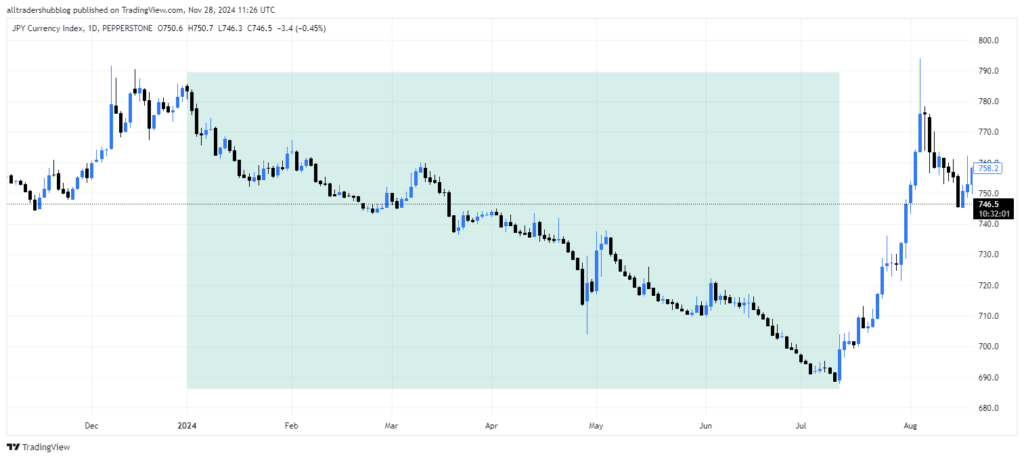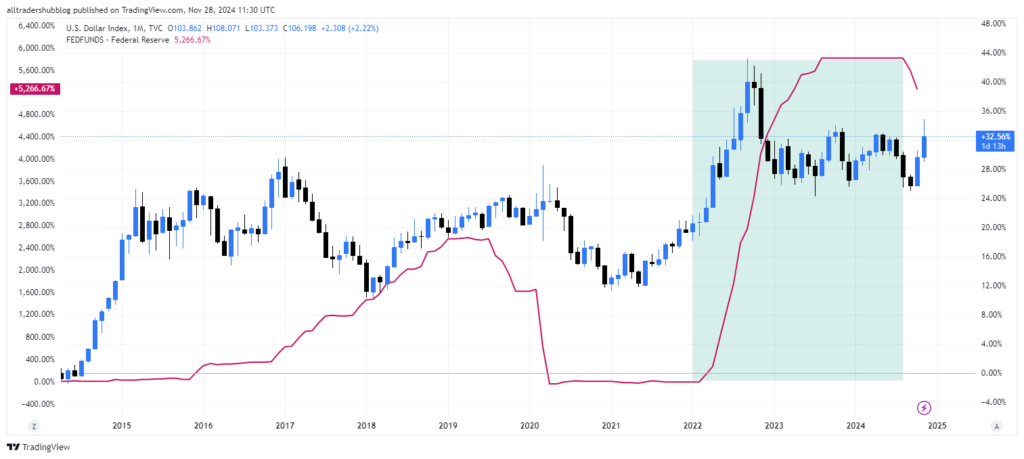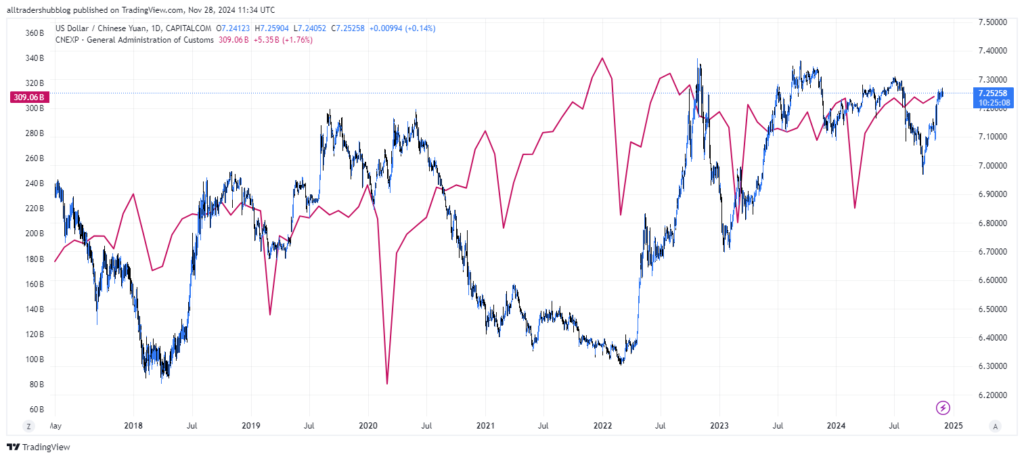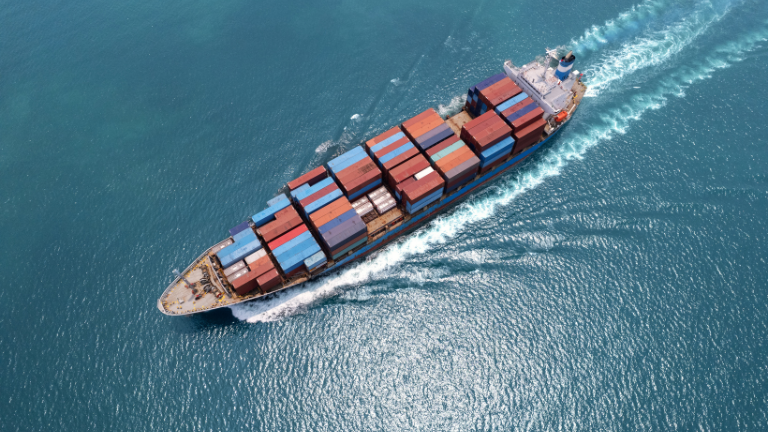The trade balances, a critical macroeconomic indicator, measures the difference between a country’s exports and imports. A surplus, where exports exceed imports, signals strong foreign demand for domestic goods and services, while a deficit suggests greater reliance on foreign products. Beyond its role as a reflection of economic activity, the trade balance significantly influences central bank policies, particularly in areas such as currency stabilization and interest rate adjustments.
Central banks, tasked with maintaining economic stability, often navigate the complexities of trade imbalances to achieve their mandates. Persistent trade surpluses or deficits can drive shifts in exchange rates, inflation, and overall economic growth, requiring monetary authorities to intervene through currency markets or interest rate policies.
This article explores the intricate relationship between trade balances, central bank policies, and interest rates. It examines how trade imbalances influence currency intervention and monetary decisions. Understanding these dynamics provides valuable insights into how trade balances shape monetary policies and their broader implications for global markets.
The Link Between Trade Imbalances and Currency Dynamics
Trade imbalances, whether in the form of a surplus or a deficit, play a crucial role in shaping a country’s currency value. The dynamics between trade flows and exchange rates are rooted in supply and demand for currencies, influenced by the need to settle international transactions. These imbalances not only impact the valuation of a country’s currency but also serve as a critical factor in central bank decisions aimed at maintaining economic stability.
1. Trade Imbalances and Currency Value
A trade surplus, where a country exports more than it imports, typically increases the demand for its currency. Foreign buyers must convert their local currencies to purchase goods and services from the surplus country, driving up the value of its currency. For instance, consistent trade surpluses in countries like Germany or Japan have contributed to the appreciation of the euro and yen, respectively.
Conversely, a trade deficit, characterized by higher imports than exports, leads to increased demand for foreign currencies. Domestic importers convert their local currency to pay for foreign goods, which can result in depreciation of the home currency. The United States, with its persistent trade deficits, often experiences downward pressure on the dollar in this context.
2. Exchange Rate Volatility and Its Implications
Excessive currency fluctuations driven by trade imbalances can create economic challenges.
- For Surplus Economies:
- A rapidly appreciating currency can make exports more expensive and less competitive in global markets, threatening export-driven growth.
- Example: The Swiss franc, a safe-haven currency, often appreciates due to Switzerland’s trade surplus, prompting interventions by the Swiss National Bank (SNB) to protect export competitiveness.
- For Deficit Economies:
- Currency depreciation may lead to imported inflation, where the cost of foreign goods rises, eroding purchasing power and increasing production costs for import-dependent industries.
3. Central Bank Interventions to Stabilize Currency Movements
To address the adverse effects of trade-driven currency dynamics, central banks often step in with targeted interventions.
- Direct Forex Market Intervention:
Central banks may buy or sell their own currency to influence its value. For example, the Bank of Japan has historically intervened in forex markets to weaken the yen during periods of trade surplus-induced appreciation. - Indirect Measures Through Monetary Policy:
Adjustments in interest rates are another tool. Lowering interest rates can deter excessive currency appreciation in surplus economies, while raising rates can attract foreign capital to counter currency depreciation in deficit economies.
4. Long-Term Structural Impacts
Persistent trade imbalances can lead to structural currency trends.
- Surplus Economies:
Accumulation of foreign exchange reserves as a result of sustained surpluses can give central banks greater leverage to manage their currencies. For instance, China’s trade surpluses have enabled the People’s Bank of China (PBoC) to amass substantial forex reserves, which it uses to stabilize the yuan. - Deficit Economies:
Dependence on foreign capital to finance deficits can lead to vulnerabilities. The U.S. dollar’s status as a global reserve currency has mitigated these risks, but smaller deficit economies often face currency crises if foreign capital flows dwindle.
5. Feedback Loops in Currency Dynamics
Trade imbalances and currency values influence each other in a cyclical manner. A weakening currency can make exports cheaper and imports more expensive, potentially reducing a trade deficit over time. Similarly, an appreciating currency might exacerbate a trade surplus by discouraging imports. Central banks monitor these loops carefully to determine when intervention is warranted to prevent imbalances from destabilizing the broader economy.
The Role of Trade Balances in Monetary Policy Formation
Trade balances significantly influence the formulation of monetary policy, as they provide critical insights into a country’s economic stability, currency valuation, and inflationary pressures. Central banks, which oversee monetary policy, must consider how trade imbalances interact with their mandates to control inflation, foster growth, and stabilize the currency. Here, we explore how trade balances shape interest rate decisions, the management of inflation, and the overall economic priorities of central banks.
1. Influence on Interest Rates
Trade balances often dictate central bank interest rate strategies to address currency and capital flow dynamics:
- Surplus Economies:
- Countries with persistent trade surpluses face upward pressure on their currency due to increased foreign demand. Central banks may lower interest rates to discourage excessive appreciation, which can hurt export competitiveness.
- Example: The Bank of Japan has maintained ultra-low interest rates for decades, partially to counterbalance the yen’s tendency to appreciate due to Japan’s trade surpluses.
- Deficit Economies:
- Trade deficits often lead to currency depreciation, which can increase the cost of imports and result in inflation. Central banks in such economies may raise interest rates to attract foreign investment, stabilize the currency, and manage inflationary pressures.
- Example: Emerging markets frequently hike interest rates during periods of significant trade deficits to prevent capital outflows and maintain currency stability.
2. Balancing Inflation and Growth
Trade balances can directly and indirectly affect inflation, prompting central banks to adjust their monetary stance:
- Imported Inflation in Deficit Economies:
- Trade deficits can lead to higher prices for imported goods as the domestic currency weakens, fueling inflation. Central banks often respond with tighter monetary policy, such as raising interest rates, to curb inflationary pressures.
- Example: The Reserve Bank of India has raised rates during periods of high trade deficits and rupee depreciation to control inflation.
- Deflation Risks in Surplus Economies:
- Countries with trade surpluses, especially those reliant on exports, may face deflationary risks if global demand slows. Central banks may implement expansionary policies, such as lowering rates or quantitative easing, to stimulate domestic demand.
- Example: The European Central Bank (ECB) has pursued aggressive easing measures to counter deflation risks in export-heavy eurozone countries like Germany.
3. Feedback Loops Between Trade Balances and Domestic Demand
Central banks must consider how trade balances influence domestic economic activity:
- Surplus Economies:
- A reliance on external demand (exports) means the domestic economy may be vulnerable to global downturns. Central banks may prioritize policies that encourage domestic consumption to reduce dependency on trade surpluses.
- Deficit Economies:
- High import levels may reflect strong domestic demand. While this can support growth, it can also lead to unsustainable external borrowing, which central banks aim to address through tighter monetary policies.
4. Trade Balances as an Indicator of External Vulnerabilities
Trade imbalances provide early warnings about potential vulnerabilities that central banks must address:
- Sudden Capital Outflows:
- In deficit economies, worsening trade balances can trigger capital outflows, leading to currency crises. Central banks often tighten monetary policy preemptively to prevent such scenarios.
- Example: Turkey has experienced sharp currency depreciations during periods of widening trade deficits, prompting its central bank to hike interest rates sharply.
- Foreign Exchange Reserves and Stability:
- Surplus economies with ample forex reserves may adopt looser monetary policies, knowing they can intervene in forex markets if needed. Conversely, deficit economies with limited reserves face constrained policy options.
5. Coordination of Monetary and Fiscal Policies
To address trade imbalances effectively, central banks often work in tandem with fiscal policymakers:
- Fiscal Support for Structural Adjustments:
- Monetary policy alone cannot resolve deep-seated trade imbalances. Fiscal measures, such as subsidies for export industries or tariffs to reduce import dependence, complement central bank efforts.
- Infrastructure and Competitiveness:
- Investments in infrastructure and productivity enhance trade balance outcomes, allowing central banks to focus on long-term growth rather than short-term currency management.
Case Studies of Central Bank Actions in Response to Trade Imbalances
Central banks play a crucial role in addressing the economic challenges posed by trade imbalances. Their responses, tailored to the specific dynamics of their economies, illustrate the multifaceted strategies central banks employ to stabilize currencies, control inflation, and sustain growth. Here, we explore notable case studies of central bank interventions in countries with persistent trade imbalances, highlighting the tools and outcomes of these actions.
1. Japan: Managing Trade Surpluses and the Yen
Japan has consistently run trade surpluses due to its robust export-driven economy, particularly in automotive and electronics sectors. These surpluses create upward pressure on the yen, making Japanese exports less competitive globally.
- Central Bank Action:
- The Bank of Japan (BoJ) has frequently intervened in forex markets to weaken the yen and support exporters. This includes direct yen selling and buying foreign currencies to prevent excessive appreciation.
- To further ease pressure, the BoJ has maintained ultra-low interest rates and implemented aggressive monetary policies, such as quantitative easing, to stimulate domestic demand and reduce reliance on exports.
- Outcome:
- While these policies have provided short-term relief to exporters, they have also led to long-term challenges, including a reliance on external demand and deflationary pressures.

2. United States: Trade Deficits and Dollar Strength
The United States is known for its persistent trade deficits, largely driven by high consumer demand for imports and the dollar’s role as the global reserve currency. These deficits put downward pressure on the USD but are often offset by capital inflows attracted by the U.S.’s strong financial markets.
- Central Bank Action:
- The Federal Reserve rarely intervenes directly in currency markets, relying instead on interest rate adjustments to manage the economic impacts of trade deficits. For instance, during periods of significant deficits and inflation, the Fed has raised interest rates to stabilize the dollar and control inflation caused by higher import prices.
- Outcome:
- The dollar remains resilient despite trade deficits, supported by global demand for U.S. assets. However, long-term reliance on external capital inflows has raised concerns about vulnerability to shifts in global investment patterns.

3. China: Currency Management to Sustain Trade Surpluses
China’s rapid economic rise has been fueled by significant trade surpluses, particularly in manufacturing and technology exports. The People’s Bank of China (PBoC) has actively managed the yuan’s value to maintain its export competitiveness.
- Central Bank Action:
- The PBoC frequently intervenes in currency markets, buying foreign exchange reserves to prevent the yuan from appreciating too quickly.
- China also employs a tightly managed exchange rate regime, allowing only gradual adjustments to the yuan’s value.
- Outcome:
- These actions have sustained China’s trade surpluses but have drawn international criticism, particularly from the U.S., accusing China of currency manipulation. Additionally, the accumulation of large foreign exchange reserves has created imbalances in the global financial system.

4. Switzerland: Tackling Trade Surpluses and the Safe-Haven Franc
Switzerland’s trade surplus is driven by high-value exports like pharmaceuticals, watches, and machinery. The Swiss franc’s status as a safe-haven currency exacerbates upward pressure on its value, particularly during global economic uncertainty.
- Central Bank Action:
- The Swiss National Bank (SNB) has intervened heavily in forex markets, purchasing foreign currencies to weaken the franc and support exporters.
- The SNB also implemented negative interest rates to discourage capital inflows and reduce demand for the franc.
- Outcome:
- While the interventions have helped manage the franc’s value, prolonged negative interest rates have created challenges for the banking sector and savers.

5. Emerging Markets: Coping with Trade Deficits and Currency Crises
Emerging markets with persistent trade deficits often face severe currency depreciations, leading to inflation and economic instability.
- Example: Turkey:
- Turkey has experienced chronic trade deficits, driven by high energy imports and reliance on foreign capital. These deficits have led to frequent currency crises.
- Central Bank Action:
- The Central Bank of Turkey has responded by sharply raising interest rates to attract foreign investment and stabilize the lira.
- Despite these efforts, inconsistent policy signaling and external shocks have limited their effectiveness.
- Outcome:
- While high rates temporarily stabilized the currency, they also increased borrowing costs, further straining the domestic economy.
Key Lessons from Case Studies
- Surplus Economies:
- Central banks in surplus economies often focus on preventing excessive currency appreciation to maintain export competitiveness.
- Tools include direct forex interventions, interest rate cuts, and expansionary monetary policies.
- Deficit Economies:
- Deficit economies prioritize stabilizing currency values and managing inflation through interest rate hikes or other measures to attract foreign capital.
- Global Impact:
- Central bank actions in response to trade imbalances often ripple across global markets, influencing capital flows, exchange rate stability, and international trade dynamics.
Challenges for Central Banks in Addressing Trade Imbalances
Trade imbalances present a complex set of challenges for central banks, which must navigate conflicting economic priorities, global interdependencies, and structural limitations. Whether addressing trade surpluses or deficits, central banks often find themselves balancing short-term economic stability against long-term sustainability. Here, we examine the major challenges central banks face when tackling trade imbalances and the broader implications of their actions.
1. Conflicting Policy Objectives
Central banks frequently encounter trade-offs between addressing trade imbalances and fulfilling their primary mandates, such as inflation control and economic growth.
- Surplus Economies:
- Efforts to counter excessive currency appreciation (e.g., through lowering interest rates or intervening in forex markets) can lead to inflationary pressures or asset bubbles in the domestic economy.
- For example, Japan’s prolonged low interest rates to manage yen strength have contributed to deflation and stagnant domestic demand.
- Deficit Economies:
- Measures to stabilize currencies, such as raising interest rates, can curtail economic growth by increasing borrowing costs and reducing domestic consumption.
- Emerging markets often face these dilemmas, where efforts to attract foreign capital via high rates can stifle economic expansion.
2. Global Coordination Challenges
Trade imbalances are inherently global issues, often requiring coordinated responses across countries. However, achieving such coordination is fraught with difficulties.
- Currency Wars:
- Unilateral actions by central banks to devalue their currencies and boost export competitiveness can lead to retaliatory measures, triggering “currency wars” that destabilize global trade.
- Example: Accusations of competitive devaluation have been frequent in the relationship between the U.S. and China, with each side blaming the other for trade imbalances.
- Lack of Multilateral Frameworks:
- The absence of enforceable global mechanisms to address persistent imbalances makes it challenging to develop cohesive policies. The International Monetary Fund (IMF) offers guidance but lacks the authority to enforce significant changes.
3. Structural Limitations of Monetary Policy
Central banks are limited in their ability to address trade imbalances solely through monetary policy, as many underlying factors are structural in nature.
- Surplus Economies:
- Export-driven economies often have deeply ingrained structures that prioritize external demand over domestic consumption. For example, Germany’s trade surplus stems from its industrial focus and high savings rate, which monetary policy alone cannot shift.
- Deficit Economies:
- Persistent trade deficits often reflect issues like low productivity, inadequate infrastructure, or dependence on imports for essential goods, which require fiscal or structural reforms rather than monetary solutions.
4. Risks of Foreign Capital Dependence
In deficit economies, efforts to finance trade gaps by attracting foreign capital can create vulnerabilities:
- Sudden Stops in Capital Flows:
- Central banks in deficit economies often rely on high interest rates to attract foreign investment. However, global risk aversion or geopolitical shocks can lead to sudden capital outflows, exacerbating currency depreciation and economic instability.
- Example: Argentina and Turkey have both faced currency crises triggered by capital flight, despite central banks’ attempts to stabilize their currencies through rate hikes.
- Debt Accumulation:
- Persistent reliance on foreign borrowing to finance trade deficits can lead to unsustainable debt levels, further constraining monetary policy options.
5. Balancing Short-Term and Long-Term Impacts
Addressing trade imbalances often requires policies with immediate effects, but these can conflict with long-term objectives:
- Short-Term Currency Interventions:
- Central banks may intervene in forex markets to stabilize currencies, but such actions often provide only temporary relief and may deplete foreign exchange reserves.
- Example: India’s Reserve Bank has occasionally used its reserves to stabilize the rupee, but prolonged interventions risk depleting these reserves and leaving the currency vulnerable.
- Long-Term Structural Reforms:
- Encouraging domestic consumption in surplus economies or boosting export competitiveness in deficit economies typically requires years of structural reform, which is beyond the central bank’s scope.
6. Political and Public Pressure
Central banks often face political and public scrutiny when addressing trade imbalances, especially when these actions affect key economic indicators like inflation, employment, or growth.
- Political Constraints:
- Governments may pressure central banks to adopt policies that align with short-term political objectives, such as stimulating growth ahead of elections, even if these actions worsen trade imbalances.
- Example: The U.S. Federal Reserve has faced political pressure to maintain a strong dollar, which can conflict with trade balance objectives.
- Public Perception:
- Currency devaluation, often used to address trade deficits, can lead to higher import prices, eroding public purchasing power and sparking criticism.
7. Technological and Geopolitical Shifts
Evolving global dynamics create additional layers of complexity for central banks.
- Technological Disruptions:
- Advances in digital currencies and payment systems could alter the way trade is conducted and settled, requiring central banks to adapt their frameworks for managing trade-related currency flows.
- Geopolitical Risks:
- Trade wars, sanctions, and shifting trade alliances can exacerbate imbalances and complicate central banks’ ability to implement effective policies.
Implications for Future Central Bank Policies
As the global economy continues to evolve, central banks face new challenges and opportunities in addressing trade imbalances. These imbalances are no longer just reflections of domestic economic conditions but are increasingly influenced by global trade dynamics, technological advancements, and geopolitical shifts. Moving forward, central bank policies will need to adapt in several critical ways to remain effective and responsive to these changes.
1. A Shift Toward Comprehensive Policy Frameworks
Trade imbalances often stem from structural factors that monetary policy alone cannot address. To manage these complexities:
- Greater Coordination with Fiscal Policy: Central banks will need to work more closely with governments to design complementary fiscal policies that support domestic production, improve competitiveness, and reduce reliance on external markets.
- Focus on Structural Reforms: Policies to address productivity gaps, trade infrastructure, and innovation will be crucial for reducing imbalances sustainably, particularly in deficit economies.
2. The Role of Currency Management in a Volatile World
As currencies remain a key lever for addressing trade imbalances, central banks must refine their currency management strategies:
- Targeted Currency Interventions: While broad interventions risk overcorrection, targeted measures—such as managing excessive volatility—can prevent trade shocks without destabilizing global markets.
- Multilateral Cooperation on Currency Stability: With trade imbalances often triggering accusations of currency manipulation, future central bank policies will likely involve deeper collaboration with international organizations like the IMF or regional trade blocs to establish shared guidelines on acceptable currency interventions.
3. Adapting to Technological and Financial Innovations
The rise of digital currencies, blockchain technologies, and fintech solutions will significantly alter trade and currency dynamics:
- Central Bank Digital Currencies (CBDCs): CBDCs can enhance the efficiency of cross-border transactions, reduce settlement costs, and provide central banks with greater oversight of trade-related capital flows.
- Data-Driven Decision-Making: Advanced analytics, AI, and machine learning will enable central banks to predict trade imbalance trends more accurately, allowing for preemptive policy adjustments.
4. Addressing Geopolitical and Economic Fragmentation
Geopolitical tensions, such as trade wars or regional alliances, will increasingly shape trade balances and central bank responses:
- Preparedness for Geopolitical Shocks: Central banks must account for the economic fallout of sanctions, tariffs, and shifting trade partnerships, building reserves and contingency plans to mitigate risks.
- Support for Trade Diversification: Policies that encourage diversification of trade partners and export sectors can reduce vulnerability to external disruptions and improve overall trade balance stability.
5. Integrating Climate and Sustainability Goals
Environmental sustainability will influence trade patterns and central bank policies in the coming decades:
- Green Trade Adjustments: Central banks may need to account for the economic effects of carbon pricing, green subsidies, and trade agreements that prioritize sustainability.
- Support for Green Industries: Monetary policies, such as favorable credit terms for green projects, can help economies transition to sustainable trade practices, potentially reducing imbalances by fostering competitive export sectors.
6. Balancing Global and Domestic Priorities
Central banks must reconcile global financial stability with domestic economic objectives:
- Maintaining Credibility with Foreign Investors: For deficit economies reliant on external funding, policies must strike a balance between stabilizing currencies and fostering domestic growth.
- Managing Surplus Economies’ Dependence on Exports: In surplus economies, central banks may shift focus toward boosting domestic consumption and reducing reliance on external demand.
7. Enhancing Flexibility and Agility
Future central bank policies will need to be more dynamic to adapt to rapidly changing economic conditions:
- Scenario Planning: Developing multiple policy pathways to address different trade balance scenarios will enable faster responses to global trade shocks.
- Continuous Policy Evolution: With the global economy in flux, central banks must regularly reassess their strategies and incorporate new tools to address emerging challenges.
Conclusion
Trade balances are a critical determinant of economic stability, influencing currency values, central bank policies, and broader monetary dynamics. As globalization deepens and economies become increasingly interconnected, the management of trade imbalances has grown more complex, requiring central banks to adopt innovative and multifaceted approaches.
This article has explored the intricate relationship between trade balances and monetary policy, highlighting how central banks navigate challenges such as conflicting policy objectives, structural limitations, and geopolitical risks. By examining case studies, we have seen how surplus and deficit economies employ differing strategies to stabilize their currencies and address economic imbalances.
Looking ahead, the implications for future central bank policies are profound. From embracing advanced technologies like digital currencies to prioritizing sustainability and fostering international cooperation, central banks must adapt to evolving global dynamics. At the same time, they must remain vigilant about balancing domestic priorities with their global responsibilities, ensuring both short-term economic stability and long-term resilience.
In an era where trade imbalances can spark ripple effects across global markets, central banks play a pivotal role in maintaining equilibrium. By leveraging innovative tools, fostering collaboration, and pursuing structural reforms, they can turn trade challenges into opportunities for sustainable growth, setting the foundation for a more balanced and resilient global economy.
